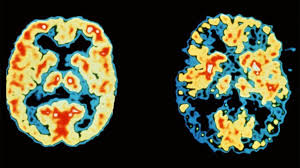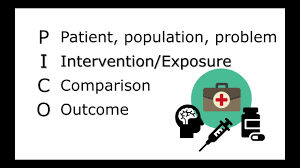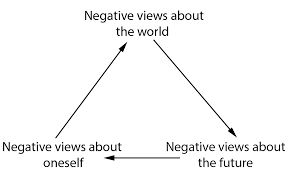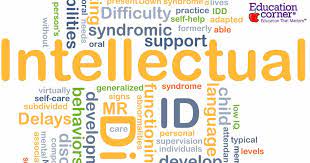Want help to write your Essay or Assignments? Click here
Mental Health Consumer Care
“How would you feel when almost every individual within the society treats you differently by avoiding any form of interaction? Well, no one prefers to be treated that way. Mental health consumers are more often marginalized because of their mental state. This aspect can worsen their entire being and situation, which can propel them to neglect the self. By definition, a mental health consumer refers to persons who use mental health services in order to empower their mental health status while obtaining support or treatment.
Evidently, suffering from mental illness can be devastating to a patient and that situation can affect various aspects of their lives ranging from their physical status to their emotional being. On the other hand, self-neglect refers to the behavioral situation in which a person neglects or fails to attend to their personal basic needs such as feeding, appropriate clothing, tending appropriately to medical conditions, feeding or personal hygiene. Nonetheless, in extreme cases of self-neglect, the situation can be inferred to as Diogenes syndrome (Townsend, 2013).
Despite the severity of self-neglect in a mental health consumer, nursing professionals need to care for them in an attempt to improve their mental health issues. This presentation focuses on the relevance of nursing care of mental healthcare consumers who self-neglect to modern mental health nursing as well as to recognize the appropriate linkages with other mental health care providers.
In order to appropriately identify patients suffering from mental health problems, it is ideal to identify the various aspects that help in identifying them or the factors that assist in characterizing them. Most cases involving self-neglect are often recognized as a result of numerous complaints received from several sources such as community organizations, neighbors, GPs and healthcare professionals (Naik, Lai, Kunik & Dyer, 2008).
The process of managing and identifying cases is very complex and difficult, which requires a multi-disciplinary and multi-agency approach. Based on several studies, individuals with mental health problems are often poor and indulge in smoking habits, lack exercise, consume alcohol, have poor diets and consumer other drugs (Middleton, 2008; Richardson, 2007). The deteriorating state of their daily lives often affects their energy levels, organization skills, attention, physical abilities or motivation.
The effect on the patient can cause them to neglect the self. Studies also indicate that the side effects of certain psychiatric medications can cause a decrease in the motivation levels among mental patients (Townsend, 2008; Gunstone, 2003). Therefore, self-neglect among mental patients can be caused by illness alone. With the help of medical practitioners including nursing care cases of self neglect among mentally ill patients re likely to reduce.
Want help to write your Essay or Assignments? Click here
Notably, nurses constitute the largest population of health care professionals, thus, they have a key role in the management and identification of self-neglect among mentally ill patients. The relevance of nursing care to mental healthcare consumers in the modern nursing practice can be identified through the assessment, diagnosis, outcome identification, planning, and implementation and evaluation steps (Peate, Wild, & Nair, 2014).
In the initial process, nurses establish a database in which the database relates to the client using assessment tools such as KELS, geriatric depression scale and nutrition assessment (Pickens et al., 2007). The next process involves identifying the patients’ health care needs as well as the specific goals for care. The third process involves establishment of the specific criteria that measures the achievement of anticipated outcomes while the forth process involves designing the most appropriate strategy that facilitates the achievement of the desired goals.
The implementation process involves initiating and finishing actions that are necessary in accomplishing goals as the final process involves determination of the degree to which the objectives and goals of the implemented care have been achieved (Boyd, 2010). Through this sequential step, a nursing practitioner is capable of analyzing personal achievements in relation to providing care to patients, especially those with mental illness and having self-neglect. The outcomes of this process help both the nursing specialists and other medical professionals to identify the various steps that in deed help in solving the problem of self-neglect among mentally ill patients, for future referencing.
Currently, the nursing profession is working towards providing holistic care to patient. This means that other than assisting patients within hospitals, nurses also help patients outside the hospitals such as acceptance within the society. With reference to mentally ill patients, they are among the mostly segregated groups of people within the society. The nursing education helps in providing additional knowledge to nurses and it is disseminated to the public by informing them that mentally ill patients are just like other people with slight differences in their ways of thinking and making decisions.
Some of the interventions include adult protection services, drug misuse rehabilitation, housing services, budgeting services and neurological assessment among many others (Lauder, Anderson & Barclay, 2005). These shape the current approach in providing care to patients by integrating friendly approaches towards the patients. By dealing with cases of self neglect, nurses are capable of reducing the stigma that mental patients receive, which in turn promotes their general well-being.
In conclusion, within the modern nursing field, practitioners are more propelled towards the identification and management of self-neglect cases among mentally ill patients as a means of preventing the reoccurrence of the phenomenon. Since nurses constitute the largest portion of individuals within the health care sector, they play a chief role in ensuring the provision of proper care to patients.
In the nursing profession, taking care of mentally ill patients helps in identifying the most appropriate ways of providing care. Treating mentally ill patients with self-neglect issues helps in improving the health of the patients in general.”
References
Boyd, M. (2010). Psychiatric nursing: Contemporary practice. Philadelphia: Lippincott Williams & Wilkins. https://books.google.co.ke/books?id=a-GcGVtBnqQC&pg=PA893&lpg=PA893&dq=Nursing+Care+of+Mental+patients+Who+Self+%E2%80%93+Neglect+relevance++to+contemporary+mental+health+nursing.&source=bl&ots=H7F7RnZ_WT&sig=hFRFTS4lxe5tl53BEFM-1drGcpA&hl=en&sa=X&redir_esc=y#v=onepage&q=Nursing%20Care%20of%20Mental%20patients%20Who%20Self%20%E2%80%93%20Neglect%20relevance%20%20to%20contemporary%20mental%20health%20nursing.&f=false
Gunstone, S. (2003). Risk assessment and management of patients whom self-neglect: a ‘grey area’ for mental health workers. Journal of Psychiatric and Mental Health Nursing, 10, 3, 287-296. http://onlinelibrary.wiley.com/doi/10.1046/j.1365-2850.2003.00568.x/abstract
Lauder, W., Anderson, I., & Barclay, A. (2005). A framework for good practice in interagency interventions with cases of self-neglect. Journal of Psychiatric and Mental Health Nursing, 12, 2, 192-198. http://www.ncbi.nlm.nih.gov/pubmed/15788037
Middleton, J (20 June, 2008). Self-neglect 2: nursing assessment and management. Nursing Times. Retrieved from http://www.nursingtimes.net/roles/older-people-nurses/self-neglect-2-nursing-assessment-and-management/1584631.fullarticle
Naik, A. D., Lai, J. M., Kunik, M. E., & Dyer, C. B. (2008). Assessing capacity in suspected cases of self-neglect. Geriatrics, 63, 2, 24-31. http://www.ncbi.nlm.nih.gov/pmc/articles/PMC2847362/
Peate, I., Wild, K., & Nair, M. (2014). Nursing Practice: Knowledge and Care. Hoboken: Wiley. https://books.google.co.ke/books?id=xqXCBwAAQBAJ&pg=PA250&lpg=PA250&dq=Nursing+Care+of+Mental+patients+Who+Self+%E2%80%93+Neglect+relevance++to+contemporary+mental+health+nursing.&source=bl&ots=a6pjAEpAMS&sig=XBJXGriVDaILTkHpVefKU3FG_2o&hl=en&sa=X&redir_esc=y#v=onepage&q=Nursing%20Care%20of%20Mental%20patients%20Who%20Self%20%E2%80%93%20Neglect%20relevance%20%20to%20contemporary%20mental%20health%20nursing.&f=false
Pickens, S., Naik, A. D., Burnett, J., Kelly, P. A., Gleason, M., & Dyer, C. B. (2007). The utility of the Kohlman evaluation of living skills test is associated with substantiated cases of elder self-neglect. Journal of the American Academy of Nurse Practitioners, 19, 3, 137-142. http://www.ncbi.nlm.nih.gov/pubmed/17341281
Richardson, B. K. (2007). Psychiatric nursing. Clifton Park, NY: Thomson Delmar Learning. https://books.google.co.ke/books?id=yw2HAQAACAAJ&dq=psychiatric+nursing+by+richardson&hl=en&sa=X&redir_esc=y
Townsend, M. C. (2008). Nursing diagnoses in psychiatric nursing: Care plans and psychotropic medications. Philadelphia: F.A. Davis Co. http://www.sbmu.ac.ir/uploads/townsend2011.pdf
Townsend, M. C. (2013). Essentials of psychiatric mental health nursing: Concepts of care in evidence-based practice. Philadelphia: F.A. Davis Co. https://books.google.co.ke/books?id=cxdengEACAAJ&dq=Essentials+of+psychiatric+mental+health+nursing:+Concepts+of+care+in+evidence-based+practice.&hl=en&sa=X&redir_esc=y
Want help to write your Essay or Assignments? Click here








